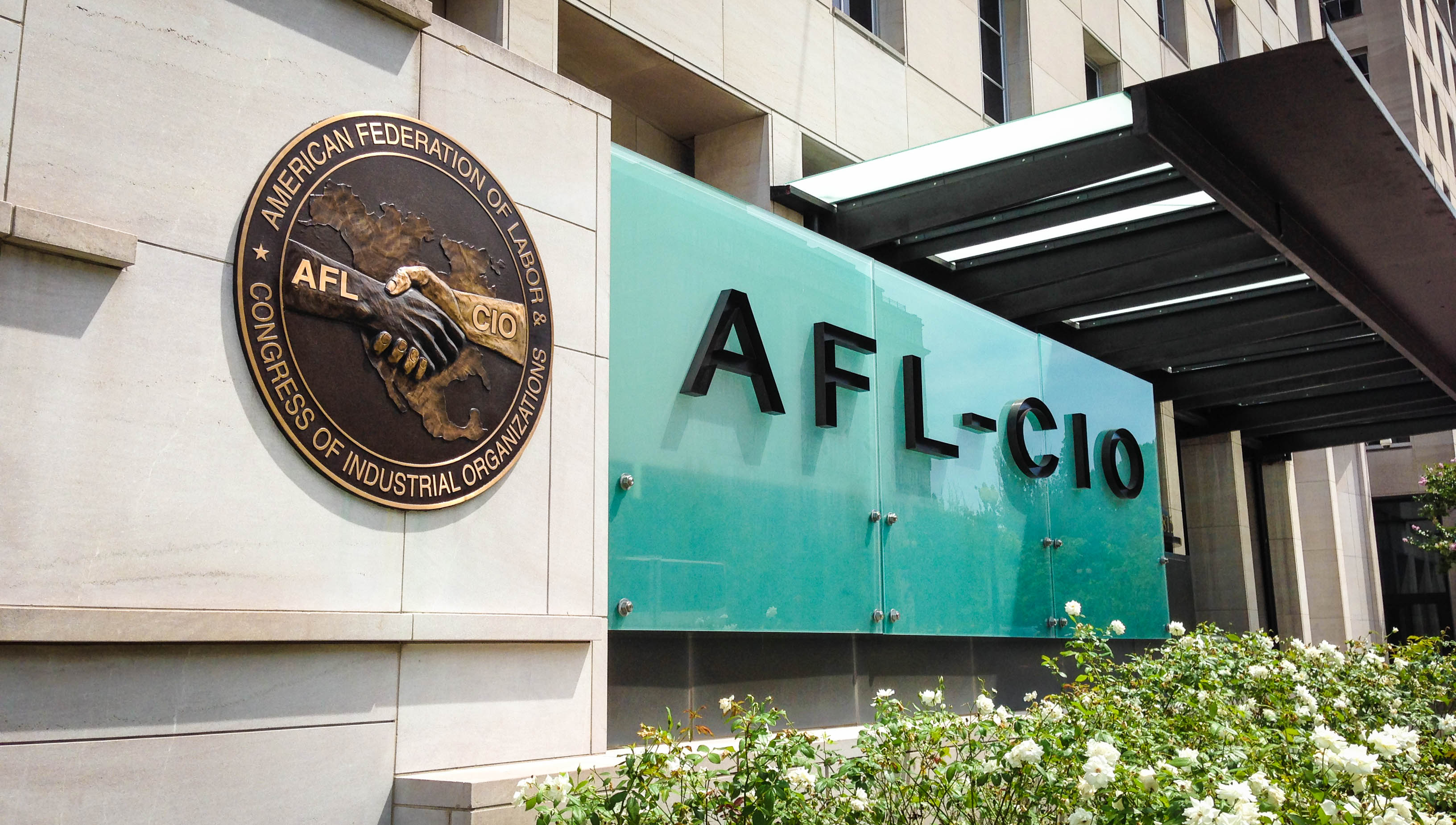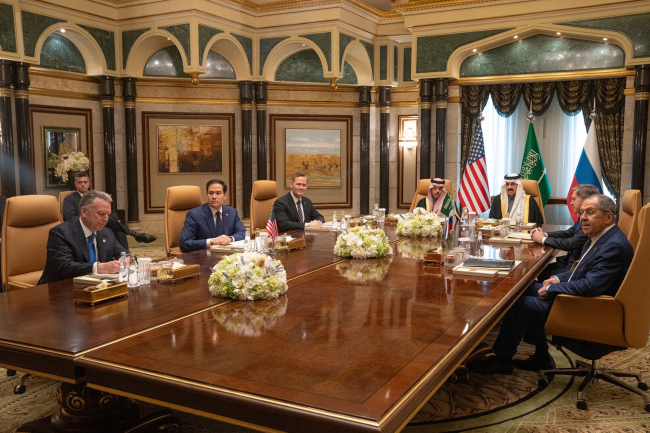Agreement on the Trans-Pacific Partnership (TPP) in Atlanta. TPP and TTIP: Power Games in the U.S. Congress
Our analysis on the Agrement on the Trans-Pacific Partnership (TPP) in Atlanta: President Obama is now seeking approval from Congress. He might be getting more support from the Republicans.

President Barack Obama’s trade program, among the most ambitious in recent history, includes two multilateral agreements on the trade of goods and services. Following weeks of complicated procedural and political manipulations, Congress recently took a major step toward ratifying the agreements: on June 24th, the Senate voted what is commonly known as “fast-track” authority. This gives Obama the ability to negotiate trade deals subject to only a simple majority ratification vote by Congress without the possibility of amendments. The process provides a window into the complicated world of political influence and congressional procedure in the United States.
TPP and TTIP
Obama’s trade agenda includes two trade bills: the Trans-Pacific Partnership (TPP) and the Trans-Atlantic Trade and Investment Partnership (TTIP).
The Trans-Pacific Partnership (TPP) would link twelve countries spanning North America, South America, Asia and Oceania, while strategically omitting China from the pact. Prospective signatories account for 40% of the world’s GDP and 26% of the world’s trade. TPP aims to remove barriers to trade by eliminating tariffs and harmonizing regulations. Supporters admire the agreement’s potential geopolitical and economic implications; opponents question its transparency and whether it prioritizes corporate interests over those of everyday Americans. TTIP, the Trans-Pacific Partnership’s European counterpart, has similar goals and methods but remains relatively unknown in the United States despite widespread opposition in the E.U.
Both parties are split on the issue of trade due to ideological differences and the influence of interest groups. On the Democratic side, President Barack Obama supports the trade agreements while congressional Democrats are overwhelmingly opposed. Labor unions blame free trade for the decline in manufacturing jobs, environmentalists fear that harmonizing regulations could lead to decreased environmental protections and healthcare advocates claim that the agreements will make pharmaceuticals more expensive around the world. Meanwhile, presidential hopeful Hillary Clinton came out against TPP after promoting the measure while serving in the Obama administration. The Clinton example begs the question: What proportion of Democrats actually opposes trade and how many simply reject the negotiations for political gains?
The Republican side is equally torn. The Republican Party generally supports free trade; the business community looks to benefit from the negotiations. However, a number of tea partyers opposed fast-track because it would increase presidential authority. Presidential candidates mirror the party’s indecision with Ted Cruz even changing his stance on the eve of the Senate vote amid pressure from the far-right.
Catching America’s attention
TPP has captured America’s attention while TTIP has not. This divergence in relative importance is due to three facts:
Unlike Asia, Americans view Europe as a strong ally and a fair trade partner. As a result, some of the concerns surrounding TPP simply do not apply to TTIP. Furthermore, the long and successful history of transatlantic cooperation sets a strong and positive precedent. TTIP therefore seems like a natural continuation of successful existing policies.
Just as some of TTIP’s European opposition stems from a fear that lower labor standards in the United States could draw jobs away from Europe, American opponents to TPP point to potential threats from partner countries with weak and poorly enforced labor laws such as Vietnam, Brunei and Malaysia. The U.S.’s comparative labor advantage with Europe paired with the fact that fast-track authority would cover all trade bills for six years and would therefore include both TPP and TTIP led American unions to understand that supporting TTIP would undermine their efforts to oppose the Trans-Pacific Partnership by providing justification for fast-track’s approval. Without labor intent on drawing attention to the issue, TTIP remains below the radar in mainstream American political discourse.
The Trans-Pacific Partnership on the other hand is part of a larger “pivot to Asia” strategy through which the Obama administration hopes to establish the United States as a balance to Chinese influence in the Pacific. Since the end of World War II, the United States has played a large role in the region. With China’s economic influence expanding, many view TPP as an effort to protect the U.S.’s regional leadership position by establishing the prevailing trade rules before China has the chance to do so.
U.S. Secretary of Defense Ash Carter commented that: “in terms of our rebalance in the broadest sense, passing TPP is as important… as another aircraft carrier. It would deepen our alliances and partnerships abroad and underscore our lasting commitment to the Asia-Pacific. And it would help us promote a global order that reflects both our interests and our values.” This security-based argument in favor of TPP gives it an added level of relevance that TTIP simply cannot claim.
Unions against fast-track
Across the United States, unions have lost members, jobs, rights and both grassroots and industrial influence. Despite this decline, organized labor continues to wield significant political power in Washington. The AFL-CIO, the country’s leading labor organization, reports that its membership base has shrunk by a third since its peak during the mid 1970’s. Nonetheless, unions continue to bankroll Democratic candidates while mobilizing voters at the grassroots level. In 2014, labor spent almost $235 million on political activities ranging from campaign contributions to attack ads with 96% of political spending supporting Democrats. To put that in perspective, Wall Street spent a mere $195 million divided much more equitably between parties.[1] Needless to say, Democrats take unions' demands seriously.
Organized labor’s political spending and outreach have increased since the Supreme Court lifted a number of restrictions in 2010. The Citizens United case struck down existing campaign finance laws giving corporations the right to spend unlimited money on politics. The same ruling also removed a number of restrictions on union spending and campaigning. As a result, organized labor’s resources and flexibility regarding political contributions have actually increased in the past five years. As unions continue to decline, the current level of spending may become unsustainable; but for now labor has the resources to exercise disproportionate influence on the Democratic Party.
The United States already has free trade agreements with over half of TPP countries. However, Malaysia, Vietnam and Brunei stick out as participants with no previous trade deals with the U.S. and much cheaper labor. Middle class Americans look around to see shuttered factories and reflect on how their neighborhoods have changed since NAFTA's ratification in 1993. As a matter of fact, whether NAFTA was a success or failure depends on which economic indicators one uses. Critics point to the decline in manufacturing jobs and the U.S.’s trade deficit with Mexico and Canada as an indication that the agreement failed as they had predicted. Proponents highlight increased trade value as a sign of NAFTA’s success and emphasize increased worker productivity and the emergence of trade with China as explanations for the continued decline in manufacturing jobs.[2]
Regardless of whether NAFTA positively or negatively influenced the middle class, free trade makes a convenient and plausible scapegoat for the declines in American manufacturing jobs and stagnated middle class purchasing power. As the primary representative of the middle class's interests in Washington, labor opposes any legislation that could send jobs overseas to countries with cheaper manufacturing costs. With multiple countries with inexpensive labor, TPP certainly fits the bill. As a result, labor tried desperately to overcome the congressional Republican majority to defeat it.
Congressional labrynth
In March, the AFL-CIO began opposing Obama’s trade agenda in earnest by freezing all contributions to (mostly) Democratic members of Congress. Up to that point, unions had expressed their discontent through letters and television ads. They now made it clear that the money saved by halting contributions would go to fighting TPP while only candidates who opposed trade would receive funds when they began flowing again after the fast-track vote.
An unusual coalition of tea party Republicans unwilling to cede the President authority, and Democrats opposed to trade formed formidable opposition. Without the tea party’s support, Republicans lost the majority and instead had to turn to the few pro-trade Democrats willing to stand up to labor to create a fragile coalition. These Democrats agreed to vote with Republicans on the condition that the Trade Adjustment Assistance Program (TAA), a labor/Democratic initiative that provides training and help for workers whose jobs were displaced by trade, be extended. Congressional leadership opted to link TAA and the fast-track legislation so that one could not pass without the other.
In a stunning move, the AFL-CIO then demanded that Democrats vote against TAA, their own initiative, in order to defeat fast-track by association. TAA’s 126-302 failure in the House of Representatives on June 12 initially appeared as a victory for trade-opponents and sent the White House and Congressional Leadership scrambling to keep fast-track alive.
The White House then partnered with Republican congressional leadership to create a procedural solution, now proposing fast-track authority followed by TAA as separate legislation. Republicans could pass fast-track without the bulk of the Democratic Party’s support, albeit by a much smaller margin.
Fast-track passed the House on June 18th by a slim 10 vote margin. The Senate approved fast-track 60-38 the following week on June 24th. TAA’s path was slightly more complicated. Congressional leadership now linked it to AGOA, a popular African trade deal with bipartisan support. The Senate passed TAA immediately after fast-track, sending it to the House where it passed on June 25th.
This process is telling in and of itself. By derailing and almost defeating fast-track, the AFL-CIO reminded Americans that although membership and industrial influence may be in decline, labor will have a powerful voice in Washington so long as it can finance campaigns.
Looking ahead
Although President Obama secured fast-track authority, success on TPP and TTIP is far from guaranteed. Looking ahead, the agreements will have to pass the U.S. Congress as well as the legislatures of the other 39 countries involved. TTIP’s failure seems probable as it requires unanimous approval in the European Council. TPP shows more promise because it faces less opposition abroad and it can go into effect even if one of its partner members drops out.
Despite organized labor’s best efforts, Obama’s trade agenda will likely pass in the United States barring new Democratic congressional majorities. Nonetheless, labor’s recent actions will have consequences down the road. Don’t be surprised if the pro-trade Democrats who stood up to the AFL-CIO find themselves in contested Democratic primaries against well-funded labor-backed opponents. Rather, consider it a lesson in American power politics. Democrats cannot oppose labor without negative consequences; at least not yet.
[1] Trottman, Melanie. “Unions to Fight Trade Pact by Freezing Political Donations.” Washington Post, March 10, 2015. Accessed July 3, 2015, http://www.wsj.com/articles/unions-to-fight-trade-pact-by-freezing-donations-1426029735
[2] Shell, Elizabeth. “Why the dreams and nightmares of NAFTA didn’t come true.” PBS Newshour, February 14, 2014. Accessed July 3, 2015, http://www.pbs.org/newshour/updates/u-s-economy-since-nafta-18-charts/

Available in:
Regions and themes
Share
Related centers and programs
Discover our other research centers and programsFind out more
Discover all our analysesDonald Trump v. the States: the Case of New York
While the disruptive policies of the second Trump administration are being implemented at the federal level and on the international stage, they are also being felt in the federal states and major cities across the country. In the spring of 2025, several cases involving the state and city of New York demonstrate that the president’s attacks on environmental protection, the separation of powers, freedom of speech, etc., are also being carried out at the local level.
How the US under Trump Became a Strategic and Ideological Adversary of Europe
The Europeans' worst security nightmare seems to be coming true: on Tuesday, February 18, 2025, U.S. Secretary of State Marco Rubio and Russian Foreign Minister Sergey Lavrov met in Saudi Arabia to initiate the normalization of relations between their two countries. The meeting also aimed to set up peace negotiations for Ukraine. However, despite having the potential to affect the entire continent, the discussions took place without the Europeans or the Ukrainians being present.
Will Trumpian Authoritarianism Lead to a Constitutional Crisis?
Since his return to the White House on January 20, 2025, President Donald Trump has signed around sixty executive orders to implement his political agenda. Numerous other measures have also been introduced by the White House and the new Department of Government Efficiency (DOGE) as part of these orders.
Trump’s Second Term: Laying the Groundwork for a New Trade War
In a statement released on February 1, 2025, President Trump announced the implementation of a 10% tariff on Chinese goods and a 25% tariff on imports from Canada and Mexico. While the former took effect via executive order on February 4, the latter were granted a 30-day reprieve. Sanctions targeting European Union (EU) products are said to be imminent.








